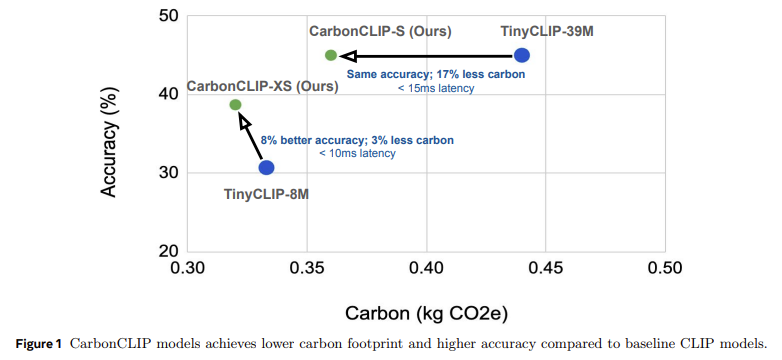As machine learning systems become integral to various applications, from recommendation engines to autonomous systems, there’s a growing need to address their environmental sustainability. These systems require extensive computational resources, often running on custom-designed hardware accelerators. Their energy demands are substantial during training and inference phases, contributing to operational carbon emissions. Also, the hardware that powers these models carries its environmental burden, called embodied carbon, from manufacturing, materials, and life-cycle operations. Addressing these dual carbon sources is essential for reducing the ecological impact of machine learning technologies, especially as global adoption continues to accelerate across industries and use cases.
Despite increasing awareness, current strategies for mitigating the carbon impact of machine learning systems remain fragmented. Most methods focus on operational efficiency, reducing energy consumption during training and inference, or improving hardware utilization. However, few approaches consider both sides of the equation: the carbon emitted during hardware operation and that embedded in the hardware’s design and manufacturing process. This split perspective overlooks how decisions made at the model design stage influence hardware efficiency and vice versa. Multi-modal models, which integrate visual and textual data, exacerbate this issue due to their inherently complex and heterogeneous computing requirements.
Several techniques currently employed to enhance AI model efficiency, including pruning and distillation, aim to maintain accuracy while decreasing inference time or energy use. Hardware-aware neural architecture search (NAS) methods further explore architectural variants to fine-tune performance, typically favoring latency or energy minimization. Despite their sophistication, these methods often fail to account for embodied carbon, the emissions tied to the physical hardware’s construction and lifetime. Frameworks such as ACT, IMEC.netzero, and LLMCarbon have recently started modeling embodied carbon independently, but they lack the integration necessary for holistic optimization. Similarly, adaptations of CLIP for edge use cases, including TinyCLIP and ViT-based models, prioritize deployment feasibility and speed, overlooking total carbon output. These approaches provide partial solutions that are effective within their scope but insufficient for meaningful environmental mitigation.
Researchers from FAIR at Meta and Georgia Institute of Technology developed CATransformers, a framework that introduces carbon as a primary design consideration. This innovation allows researchers to co-optimize model architectures and hardware accelerators by jointly evaluating their performance against carbon metrics. The solution targets devices for edge inference, where both embodied and operational emissions must be controlled due to hardware constraints. Unlike traditional methods, CATransformers enables early design space exploration using a multi-objective Bayesian optimization engine that evaluates trade-offs among latency, energy consumption, accuracy, and total carbon footprint. This dual consideration enables model configurations that reduce emissions without sacrificing the quality or responsiveness of the models, offering a meaningful step toward sustainable AI systems.
The core functionality of CATransformers lies in its three-module architecture:
- A multi-objective optimizer
- An ML model evaluator
- A hardware estimator
The model evaluator generates model variants by pruning a large base CLIP model, altering dimensions such as the number of layers, feedforward network size, attention heads, and embedding width. These pruned versions are then passed to the hardware estimator, which uses profiling tools to estimate each configuration’s latency, energy usage, and total carbon emissions. The optimizer then selects the best-performing setups by balancing all metrics. This structure allows rapid evaluation of the interdependencies between model design and hardware deployment, offering precise insight into how architectural choices affect total emissions and performance outcomes.
The practical output of CATransformers is the CarbonCLIP family of models, which delivers substantial gains over existing small-scale CLIP baselines. CarbonCLIP-S achieves the same accuracy as TinyCLIP-39M but reduces total carbon emissions by 17% and maintains latency under 15 milliseconds. CarbonCLIP-XS, a more compact version, offers 8% better accuracy than TinyCLIP-8M while reducing emissions by 3% and ensuring latency remains below 10 milliseconds. Notably, when comparing configurations optimized solely for latency, the hardware requirements often doubled, leading to significantly higher embodied carbon. In contrast, configurations optimized for carbon and latency achieved a 19-20% reduction in total emissions with minimal latency trade-offs. These findings underscore the importance of integrated carbon-aware design.
Several Key Takeaways from the Research on CATransformers include:
- CATransformers introduces carbon-aware co-optimization for machine learning systems by evaluating operational and embodied carbon emissions.
- The framework applies multi-objective Bayesian optimization, integrating accuracy, latency, energy, and carbon footprint into the search process.
- A family of CLIP-based models, CarbonCLIP-S and CarbonCLIP-XS, was developed using this method.
- CarbonCLIP-S achieves a 17% reduction in emissions compared to TinyCLIP-39M, with similar accuracy and <15 ms latency.
- CarbonCLIP-XS offers 8% improved accuracy over TinyCLIP-8M while reducing carbon by 3% and achieving <10 ms latency.
- Designs optimized only for latency led to an increase of up to 2.4× in embodied carbon, showing the risk of ignoring sustainability.
- Combined optimization strategies provided 19-20% carbon reductions with minimal latency increases, demonstrating a practical trade-off path.
- The framework includes pruning strategies, hardware estimation, and architectural simulation based on real-world hardware templates.
- This research lays the groundwork for sustainable ML system design by embedding environmental metrics into the optimization pipeline.
In conclusion, this research sheds light on a practical path toward building environmentally responsible AI systems. By aligning model design with hardware capabilities from the outset and factoring in carbon impact, the researchers demonstrate that it’s possible to make smarter choices that don’t just chase speed or energy savings but genuinely reduce emissions. The results highlight that conventional methods can unintentionally lead to higher carbon costs when optimized for narrow goals like latency. With CATransformers, developers have a tool to rethink how performance and sustainability can go hand in hand, especially as AI continues to scale across industries.
Check out the Paper and GitHub Page. All credit for this research goes to the researchers of this project. Also, feel free to follow us on Twitter and don’t forget to join our 90k+ ML SubReddit.
The post Meta AI Introduces CATransformers: A Carbon-Aware Machine Learning Framework to Co-Optimize AI Models and Hardware for Sustainable Edge Deployment appeared first on MarkTechPost.
Source: Read MoreÂ



